Bagan Unique site containing thousands of temple ruins, from around 1000 to 1200.
|
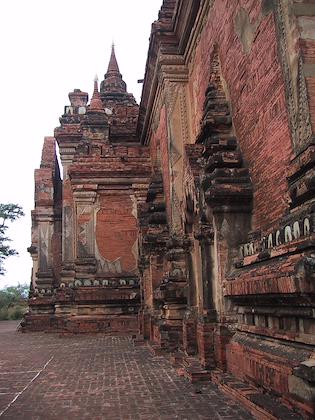 | | 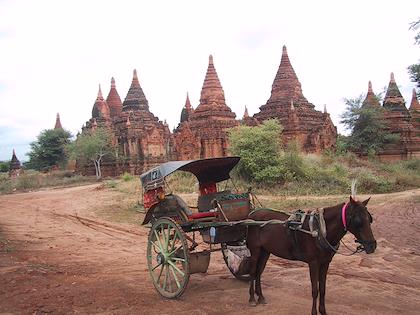 |
| Thousands of years ago, Bagan was a religious center. There are thousands of ruined temples there, in various stages of disrepair. | | I rented a horse cart for a day of touring around. |
| |
|
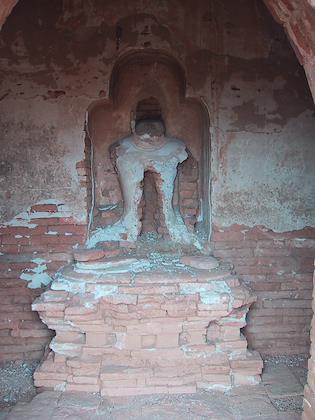 | | 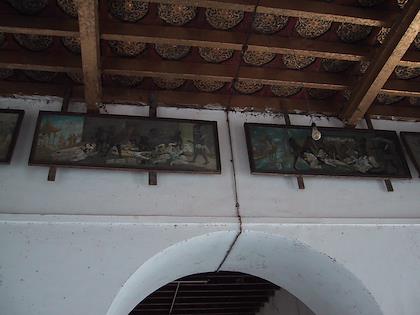 |
| Often jewels are hidden in Buddha statues. Somebody tried to dig these out. | | These are images of Buddhist hell. |
| |
|
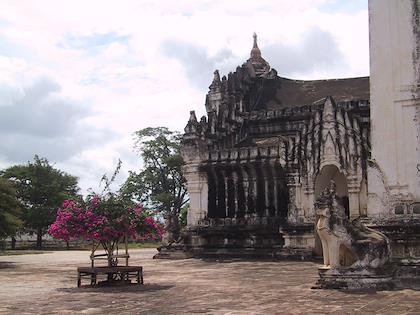 | | 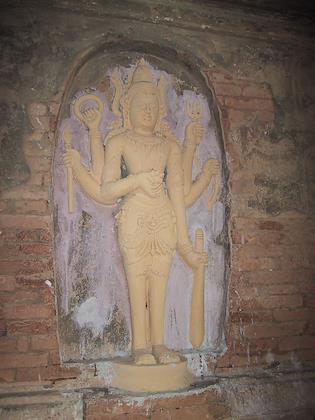 |
| Another temple. This one was still being used as a temple. | | There's a few scattered Hindu temples among all the Buddhist temples in Bagan. |
| |
|
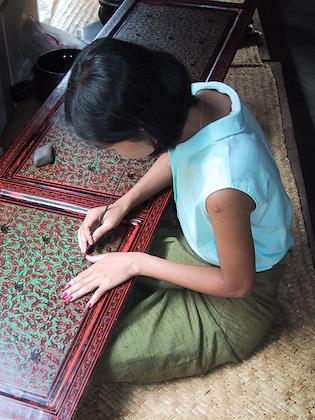 | | 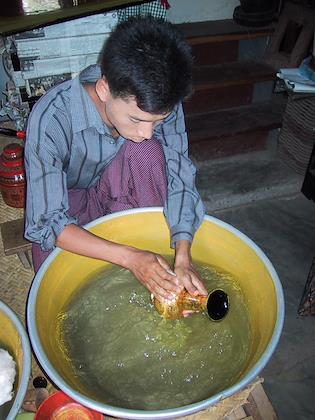 |
| In a lacquerware shop. Most of the lacquerware is exported to Thailand, for sale to tourists there. | | Some lacquerware has gold leaf put on it, in a pattern. The finishing step is to wash the gold leaf off that doesn't belong in the pattern. The water that it's washed in is saved and sold to people who get the bits of gold leaf out of it again. |
| |
|
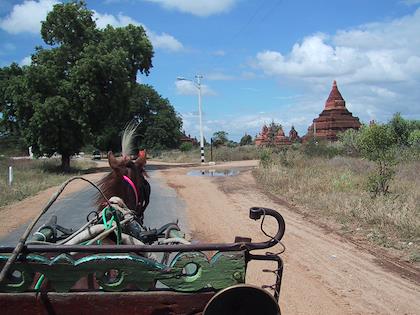 | | 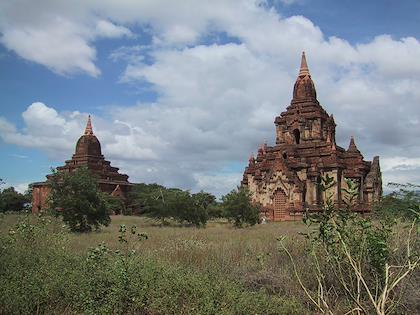 |
| The view from the horse cart. | | Abandoned temples |
| |
|
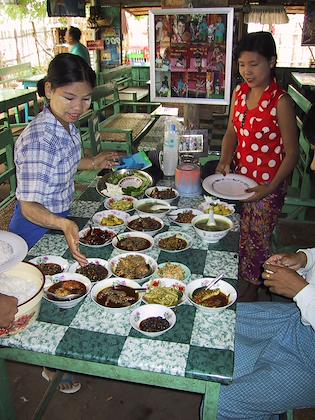 | | 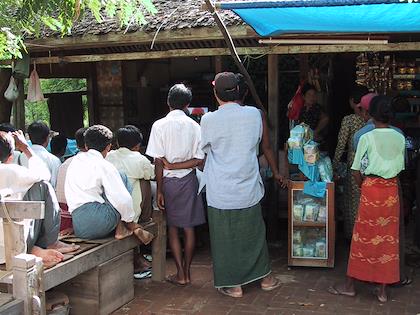 |
| Lunch at a Burmese style buffet. At first I was amazed at the waste, because we ate less than one tenth of this. But my guide told me that whatever we didn't eat went right back into the pot. The women working here were very chatty and open--it turned out that they were part of a group that sang at wedding receptions and other celebrations. | | Watching a movie on a VCR. |
| |
|
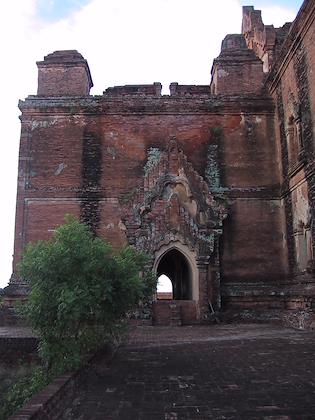 | | 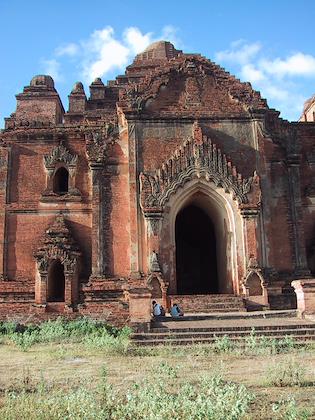 |
| Dhammayangi Paya was my favorite temple. It was huge and cavernous, with massive echoing hallways and bats flying around. | |
| |
| 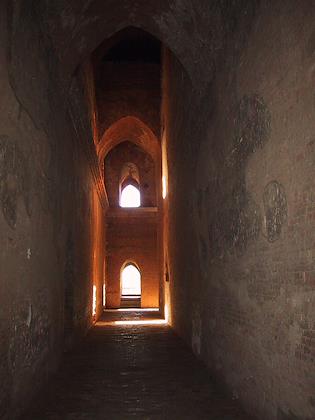 | | 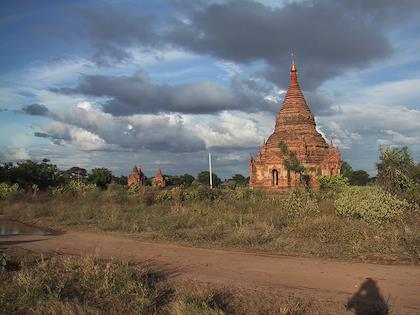 | | There were spooky walkways throughout the temple. A good place for a movie. | | Evening shot of an unnamed temple |
| |
| 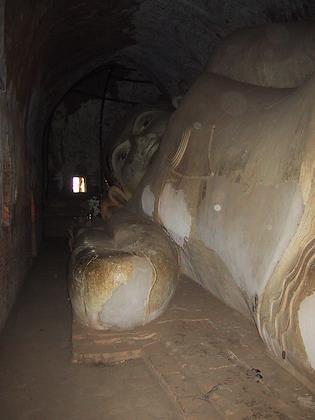 | | 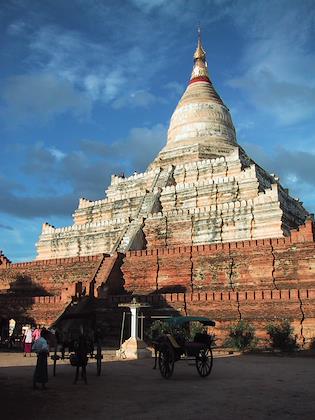 | | A reclining Buddha | | I watched the sunset from the Shwesandaw Paya. |
| |
| 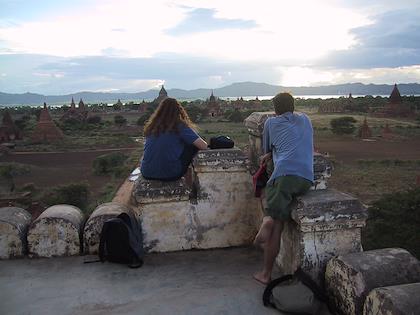 | | 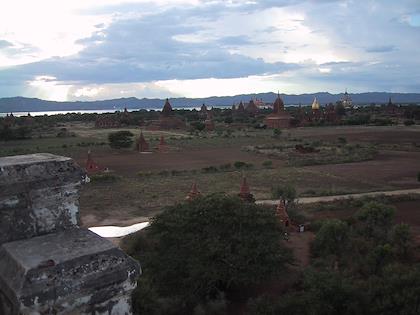 | | There were some other foreigners there for the sunset as well. The woman on the left was Israeli, the guy on the right French. | |
| |
| 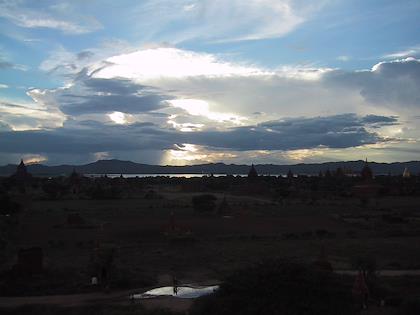 | | 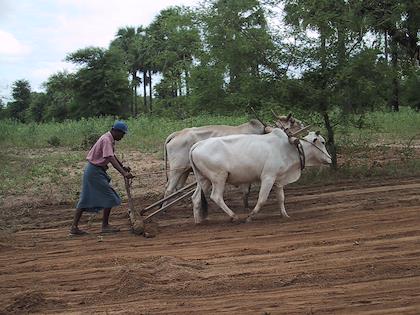 | | | On the way to Mt. Popa, a center for spirit worship in Burma, we stopped to watch a field being plowed with oxen. |
| |
| 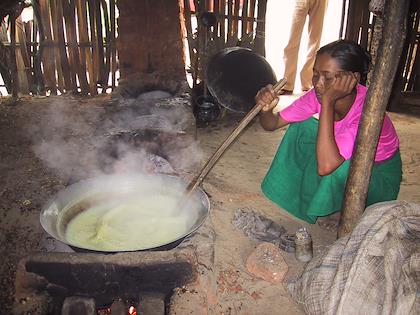 | | 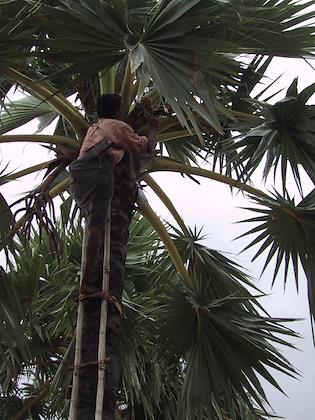 | | Sugar palms are cultivated in this area. We stopped at the hut of one of the workers and watched the palm sugar sap being boiled down. I bought a little woven basked of palm sugar candy (basically, just the boiled down sap) for about 25 cents. | | To harvest the sap, they cut slits in the palm sugar flower and put bowls beneath the slits. The sap runs into the bowls. |
| |
| 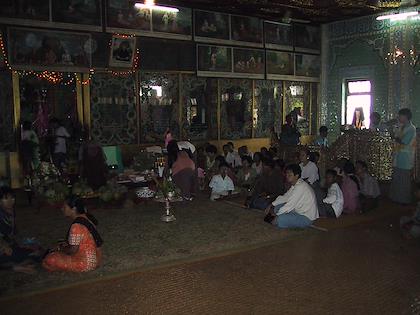 | | 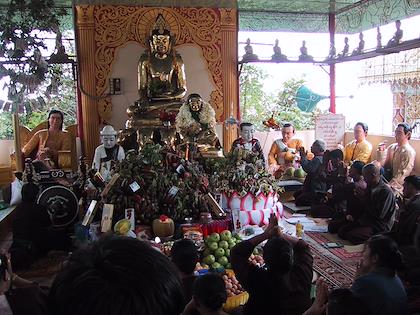 | | A nat (spirit) temple at Mt. Popa. | | All the statues around the edge of the building are of nats. There's an odd combination of Buddhism and nat worship--notice the Buddha statue in the middle. |
| |
| 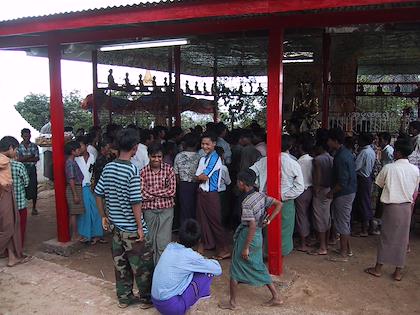 | | 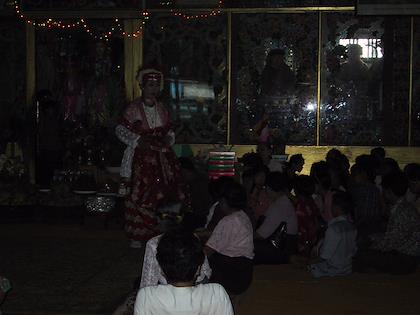 | | As part of a religious ceremony, money was thrown into the crowd. It's just about to happen in this picture, that's why there's so many men hanging around. | | This picture is a little dark, but the person in the red dress is a man dressed as a woman. Apparently the nat spirits will take possession of a person only if it is a man dressed as a woman, or a woman. |
| |
| 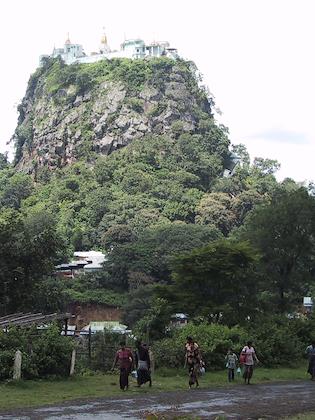 | | 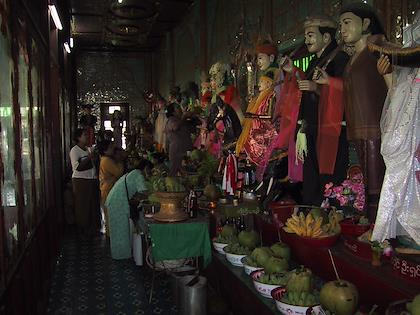 | | Mt. Popa. There's a staircase to the top, where the temples are, that takes about half an hour to climb up. | | Some of the 37 nats that are worshipped. They each died a violent death. My guide's father told him, "Why should we worship nats, if they're not even powerful enough to protect themselves from a violent death?" |
| |
| 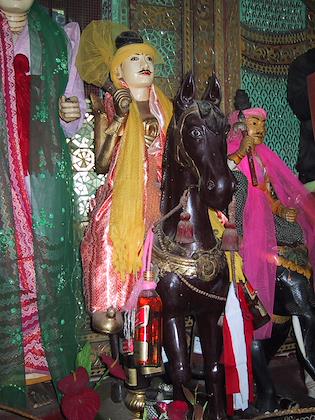 | | 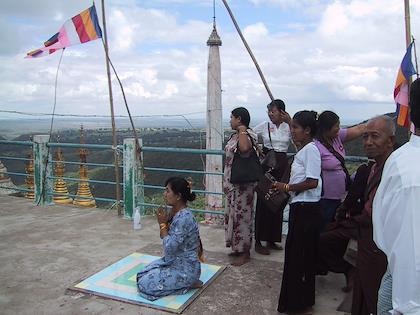 | | This spirit is an alcoholic--notice all the bottles left as offerings. | | Praying at the top of Mt. Popa. |
| |
| 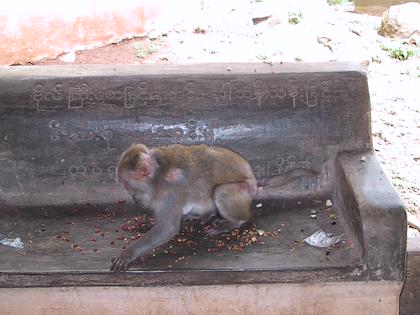 | | 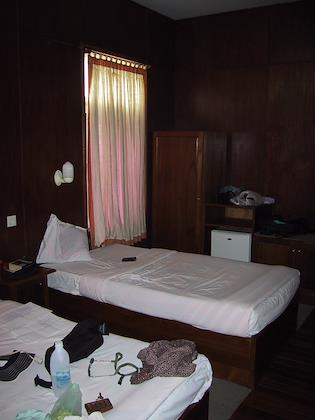 | | There's a well-fed and bold troop of monkeys at Mt. Popa that wait for handouts from tourists. | | My room in Bagan. |
| |
| 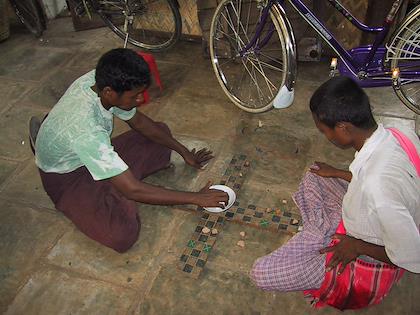 | | 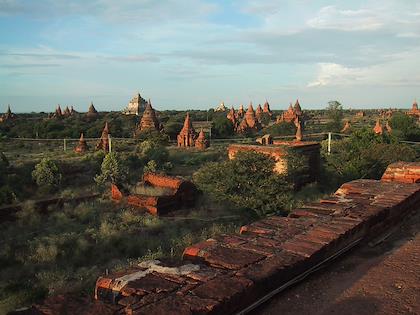 | | Gambling at a temple. They throw shells in the bowl, and then win or loose depending on how many of the shells land on one side or another. | | Sunset from another temple |
| |
| 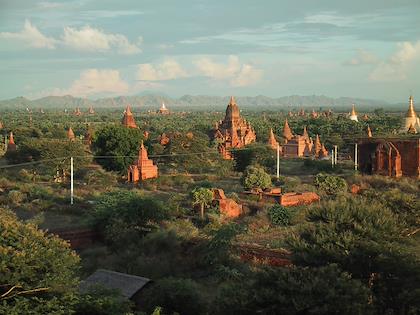 | | 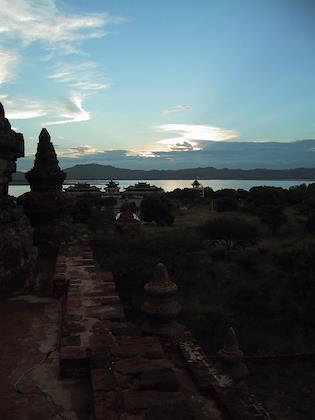 | | |
| |
| 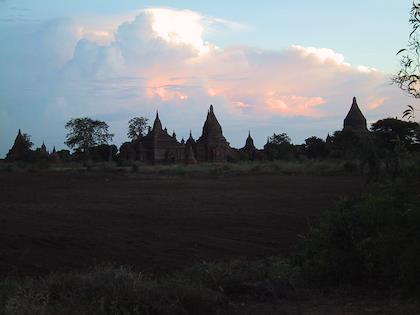 | | | | | | | | |